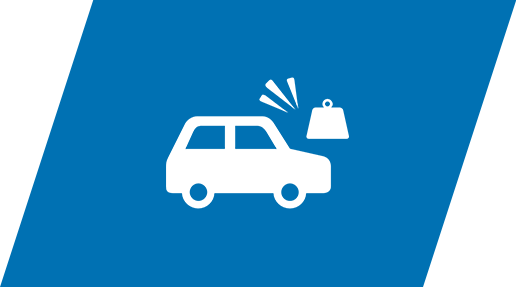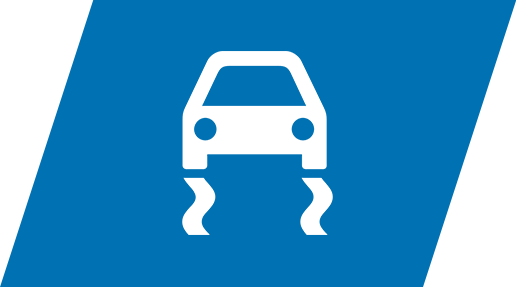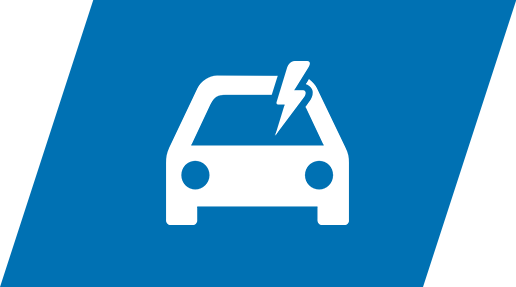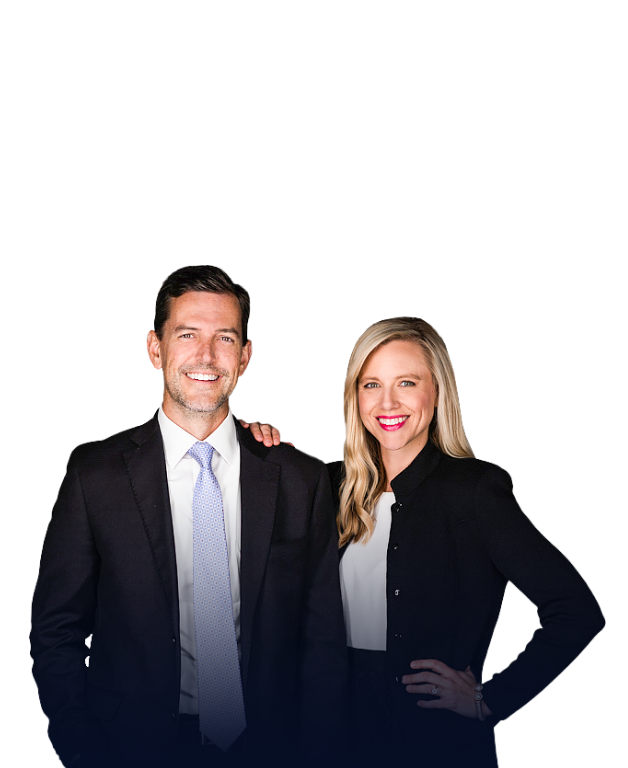We Deal With The Insurance Company
On Recovery
MYRTLE BEACH ATTORNEYS OF THE YATES FIRM
MYRTLE BEACH CAR ACCIDENT ATTORNEYS
Why You Need the Top Lawyers in Auto Accidents
If you sustained an injury in a car accident due to another driver or party’s negligence, do not hesitate to contact The Yates Firm. You might be entitled to financial compensation for the medical treatment and other expenses necessary to recover.
Car accidents are common. They can happen anywhere to anyone. Many victims end up with injuries that require emergency medical care. Much more need ongoing treatment to heal their wounds and manage pain. The cost of medical bills and associated expenses can be an economic burden. Some people face crushing debt because they can’t afford to pay their bills.
At The Yates Firm, we know the devastation of becoming involved in a car crash that wasn’t your fault. The other person could have prevented the collision if they didn’t behave recklessly.
Unfortunately, they placed you in harm’s way, and now you have to suffer the consequences of their actions. You can depend on our team to help you fight for the maximum compensation you deserve.
The Yates Firm is well-experienced with state laws and procedures. We know how to maximize the value of a client’s case. We will work hard to hold the at-fault motorist liable and try to reach your desired outcome.
Call us at 843.692.323 right now for your free consultation and learn more about the available legal options and what we can do to help. One of our Myrtle Beach car accident attorneys will be the advocate you need during this difficult time in your life.
CAR ACCIDENTS LAWYERS IN MYRTLE BEACH
WE OFFER THE PERSONAL TOUCH OF A SMALL FIRM WITH THE KNOWLEDGE AND RESOURCES OF A LARGE FIRM
A car accident can lead to significant property damage, serious injuries, and even death. Most are due to human error. Some drivers are impaired, while others become distracted or simply don’t pay attention to the road ahead. Others break traffic laws and operate their vehicles carelessly. In 2020, a total of 965 fatal crashes occurred in South Carolina. These accidents caused 1,067 fatalities.
Call: 843.692.3237

CAUSES OF CAR
ACCIDENTS
IN AN INJURY CLAIM...

Failing to Yield the Right-of-way
According to Title 56 Article 17 of the South Carolina Code of Laws, drivers must yield the right of way to others when necessary. Various scenarios require motorists, pedestrians, and other individuals to wait their turn and allow someone else to proceed ahead of them.
For example, if someone approaches an intersection at a green light to make a left-hand turn, they must slow down or stop first to allow oncoming drivers traveling straight to pass. If the turning motorist chooses to proceed without checking for oncoming cars, they could end up in the path of someone already in the middle of the intersection.

Driving Under the Influence
Drugs and alcohol can significantly impair a person’s ability to operate a vehicle safely. Both cause various symptoms that prevent a driver from focusing on the task at hand and reacting appropriately to an emergency.
Driving under the influence of alcohol or drugs can lead to a slower reaction time, poor decision-making skills, and loss of coordination. If someone chooses to get behind the wheel after consuming alcohol or drugs, they likely won’t notice a hazard on the road or traffic stopped ahead.

Distracted Driving
Distractions are everywhere. Whether a driver uses their cell phone, reaches for something in the back seat, or engages in acts of road rage, they’re not focusing on the task of driving. Distracted driving pulls attention from operating the vehicle to something else entirely.
Texting while driving is one of the most common distractions drivers face. Looking down to read or send a text is similar to driving with your eyes closed. Even if a motorist looks down for only a few seconds, it’s enough time for the scenery ahead to change. A pedestrian could enter a crosswalk, or a stoplight could turn red. Without paying attention, the driver can’t see what they’re approaching and stop.

Tailgating
Tailgating occurs when a driver follows another person’s vehicle too closely. It’s reckless behavior that places the occupants of another car at risk of serious harm. If the driver in front needs to slow down or stop without warning, the motorist following them won’t have enough time to slam on their brakes and avoid colliding with the back of the vehicle.
Everyone should know the stopping distance necessary based on the speed they’re driving and leave enough space between their car and the car in front of them. “Stopping distance” is the distance it takes for a driver to notice a perceived danger and stop their vehicle. For example, if someone travels at 50 miles per hour, they will require 174 feet to bring their car to a complete stop.

Speeding
Speeding doesn’t only refer to a driver exceeding the speed limit. It can also involve someone driving too fast for conditions. Upon approaching a defective roadway or adverse weather, drivers should slow down and proceed with caution. Unfortunately, many people don’t understand the dangers of speeding.
It’s much more challenging to have total control of a vehicle while traveling at high speeds. If someone travels above the speed limit during heavy rain, they could hydroplane and crash into a nearby car, ditch, or telephone pole. Even if driving conditions are normal, a motorist might not have the necessary reaction time to avoid a collision if the driver ahead stops suddenly.

Defective Parts
Manufacturing companies should follow specific quality and safety standards while manufacturing car parts. If errors occur during the manufacturing process, defective parts can end up on the market- lead to a vehicle accident and unfortunately, catastrophic injury.
A vehicle containing a defective part or system doesn’t function as intended. For example, if someone operates a car with a defective braking system, the brakes could fail, causing the driver to crash into a stopped vehicle in front of them.
Failing to Check Blind Spots
Blind spots are areas on both sides of a car a driver can’t see when looking in their side view or rearview mirror. Motorists should always look over their shoulders and check these areas thoroughly before changing lanes, merging, or turning.
Although looking for nearby cars before maneuvering might seem obvious, many motorists don’t pay attention to what they’re doing. If a driver merges without checking their blind spot first, they could sideswipe a vehicle already in the lane. This can be particularly difficult for trucks to see the vehicles behind them.
Driver Fatigue
Fatigue might not seem that dangerous, but it can cause the same symptoms as driving under the influence. Reduced motor skills, slowed reaction time, and poor judgment are just a few examples of the impairments a driver can face if they operate a car despite feeling tired.
Many people get behind the wheel after a long day of work or lack of sleep. It’s a common problem that can lead to catastrophic accidents. Fatigue can impair physical and mental abilities and prevent people from focusing on the task at hand- unfortunately, this can lead to vehicle accidents and even death.
According to Title 56 Article 17 of the South Carolina Code of Laws, drivers must yield the right of way to others when necessary. Various scenarios require motorists, pedestrians, and other individuals to wait their turn and allow someone else to proceed ahead of them.
For example, if someone approaches an intersection at a green light to make a left-hand turn, they must slow down or stop first to allow oncoming drivers traveling straight to pass. If the turning motorist chooses to proceed without checking for oncoming cars, they could end up in the path of someone already in the middle of the intersection.
Drugs and alcohol can significantly impair a person’s ability to operate a vehicle safely. Both cause various symptoms that prevent a driver from focusing on the task at hand and reacting appropriately to an emergency.
Driving under the influence of alcohol or drugs can lead to a slower reaction time, poor decision-making skills, and loss of coordination. If someone chooses to get behind the wheel after consuming alcohol or drugs, they likely won’t notice a hazard in the road or traffic stopped ahead.
Speeding doesn’t only refer to a driver exceeding the speed limit. It can also involve someone driving too fast for conditions. Upon approaching a defective roadway or adverse weather, drivers should slow down and proceed with caution. Unfortunately, many people don’t understand the dangers of speeding.
It’s much more challenging to have total control of a vehicle while traveling at high speeds. If someone travels above the speed limit during heavy rain, they could hydroplane and crash into a nearby car, ditch, or telephone pole. Even if driving conditions are normal, a motorist might not have the necessary reaction time to avoid a collision if the driver ahead stops suddenly.
CONTACT US ONLINE
Manufacturing companies should follow specific quality and safety standards while manufacturing car parts. If errors occur during the manufacturing process, defective parts can end up on the market.
A vehicle containing a defective part or system doesn’t function as intended. For example, if someone operates a car with a defective braking system, the brakes could fail, causing the driver to crash into a stopped vehicle in front of them.
Fatigue might not seem that dangerous, but it can cause the same symptoms as driving under the influence. Reduced motor skills, slowed reaction time, and poor judgment are just a few examples of the impairments a driver can face if they operate a car despite feeling tired. Many people get behind the wheel after a long day of work or lack of sleep. It’s a common problem that can lead to catastrophic accidents. Fatigue can impair physical and mental abilities and prevent people from focusing on the task at hand.
Tailgating occurs when a driver follows another person’s vehicle too closely. It’s reckless behavior that places the occupants of another car at risk of serious harm. If the driver in front needs to slow down or stop without warning, the motorist following them won’t have enough time to slam on their brakes and avoid colliding with the back of the vehicle.
Everyone should know the stopping distance necessary based on the speed they’re driving and leave enough space between their car and the car in front of them. “Stopping distance” is the distance it takes for a driver to notice a perceived danger and stop their vehicle. For example, if someone travels at 50 miles per hour, they will require 174 feet to bring their car to a complete stop.
Distractions are everywhere. Whether a driver uses their cell phone, reaches for something in the back seat, or engages in acts of road rage, they’re not focusing on the task of driving. Distracted driving pulls attention from operating the vehicle to something else entirely.
Texting while driving is one of the most common distractions drivers face. Looking down to read or send a text is similar to driving with your eyes closed. Even if a motorist looks down for only a few seconds, it’s enough time for the scenery ahead to change. A pedestrian could enter a crosswalk, or a stoplight could turn red. Without paying attention, the driver can’t see what they’re approaching and stop.
Blind spots are areas on both sides of a car a driver can’t see when looking in their side view or rearview mirror. Motorists should always look over their shoulders and check these areas thoroughly before changing lanes, merging, or turning.
Although looking for nearby cars before maneuvering might seem obvious, many motorists don’t pay attention to what they’re doing. If a driver merges without checking their blind spot first, they could sideswipe a vehicle already in the lane.
COMPENSATION FOR
CAR ACCIDENT VICTIMS IN MYRTLE BEACH

$200,000
Total Recovered
for a passenger in a single-car accident

$180,000
Total Recovered
for a client who slipped at a Myrtle Beach Resort

$145,000
Total Recovered
for a client hit by a reckless motorcycle driver
You can also pursue compensation for non-economic losses suffered in the crash. Examples include physical pain and suffering, loss of enjoyment of life, and emotional trauma.
Punitive damages might also be available. You would have to show clear and convincing evidence of the at-fault party’s wanton, willful, or reckless conduct for a jury to award you this form of compensation.
$200,000
Total Recovered for a passenger in a
single-car accident
$180,000
Total Recovered for a client who
slipped at a Myrtle Beach Resort
$145,000
Total Recovered for a client hit by a
reckless motorcycle driver
A HISTORY OF
SUCCESS
IN CAR ACCIDENT CLAIMS..
The Myrtle Beach car accident attorneys of The Yates Firm represent clients injured by the wrongdoing of others. We believe in fighting for accident victims in our community. You will have the opportunity to hold the negligent party liable for causing your injuries with the help of our legal team.
We know how traumatic this experience has been. You will have a dedicated and experienced attorney by your side from start to finish of the process. We have the resources necessary to investigate car crashes and gather all available evidence to prove fault. We will advocate for your rights and fight for the justice and compensation you deserve when you hire us.
WHAT SHOULD I DO IF I'VE BEEN HURT IN A
CAR ACCIDENT IN MYRTLE BEACH?
01
Call 911
Notify law enforcement of the crash and wait for an officer to arrive at the scene. The officer might investigate the cause to determine fault and include it in the accident report they write. If they ask you about what happened, don’t offer any information that could indicate your actions contributed to the crash. Simply provide your name, contact information, and insurance details.
02
Exchange Information at the Scene
Ask other drivers involved in the accident for their auto insurance information. You should also write down the names and contact information for any witnesses. Eyewitness testimony can be crucial in proving liability. Eyewitnesses can also provide a statement to the insurance company and even testify in court if you have to proceed with a lawsuit.
03
Seek Medical Treatment
Go to the hospital immediately after leaving the crash scene. You need an evaluation of your injury, even if it seems minor. The doctor can give you a diagnosis and recommend necessary follow-up care. It’s crucial to listen to their instructions and attend all required doctor’s appointments until you heal.
04
Gather Evidence
Maintain copies of your medical records, billing statements, and other documentation associated with the accident. If your injury isn’t too severe, you can take pictures at the accident scene of the damage to the cars and trucks involved. Including debris in the road, skid marks, and other relevant evidence.
05
Hire an Attorney
You should hire an attorney to assist you with your case. Attempting to handle the process alone will likely result in a denied claim or much less compensation than you deserve. Contact us today– and your attorney can complete every step on your behalf so you can focus on your recovery.
06
Contact Us
If you were injured in an accident due to another person or company’s negligent actions, call The Yates Firm today- our reach out to us online and one of our Myrtle Beach car accident attorneys will be happy to meet with you for a free consultation to review your case and advise whether we can represent you. Call 843.692.3237 right now.
TRUSTED
RECOMMENDATIONS
Get help.
Today.
ALL CONSULTATIONS ARE FREE OF CHARGE









